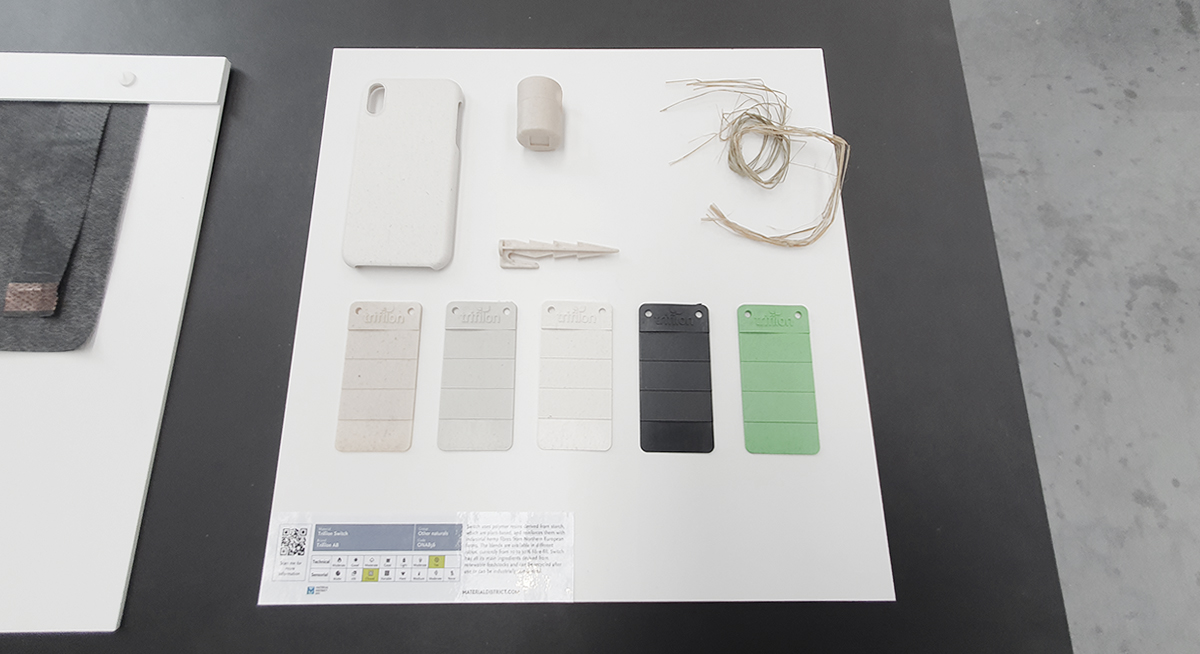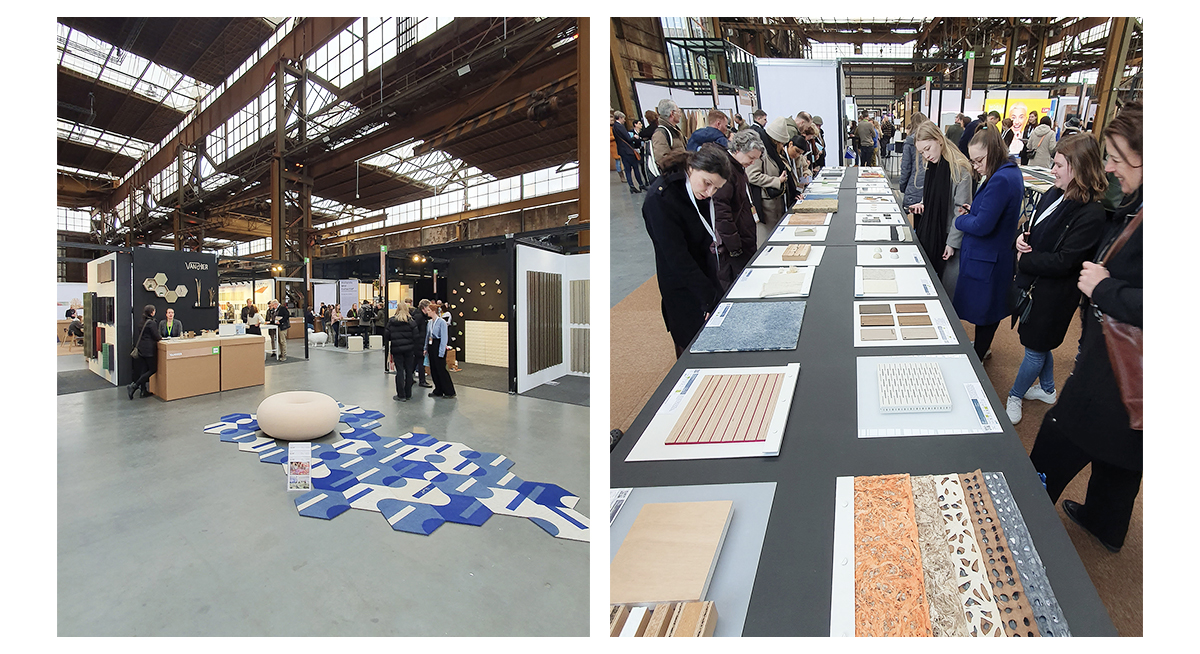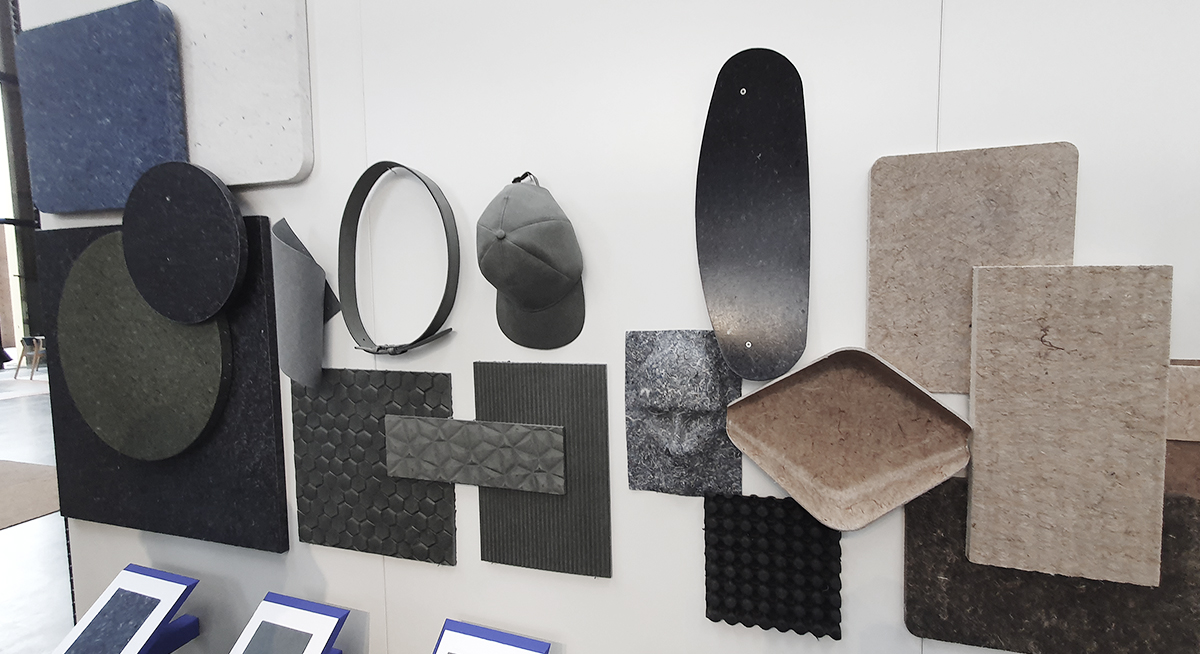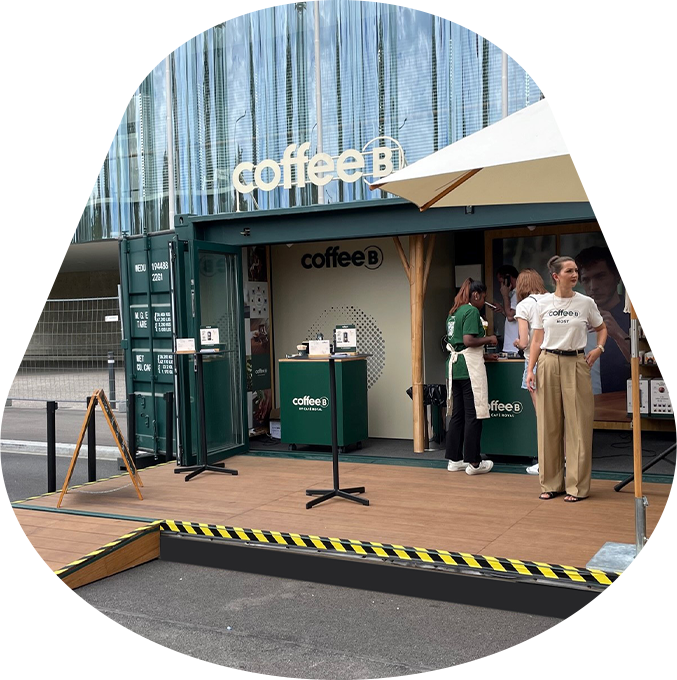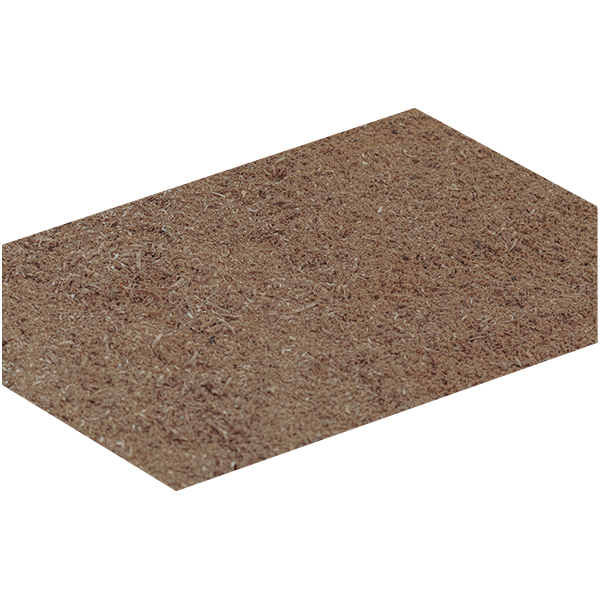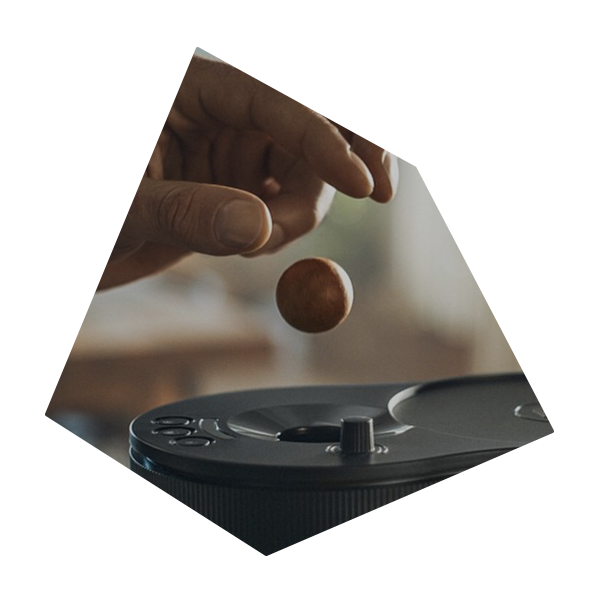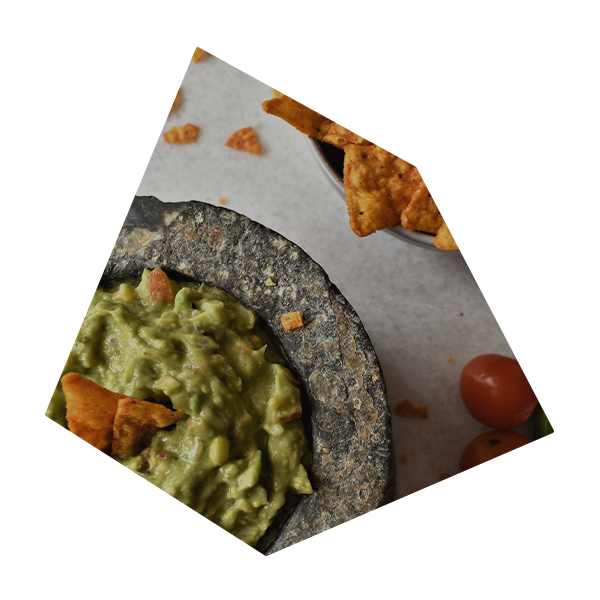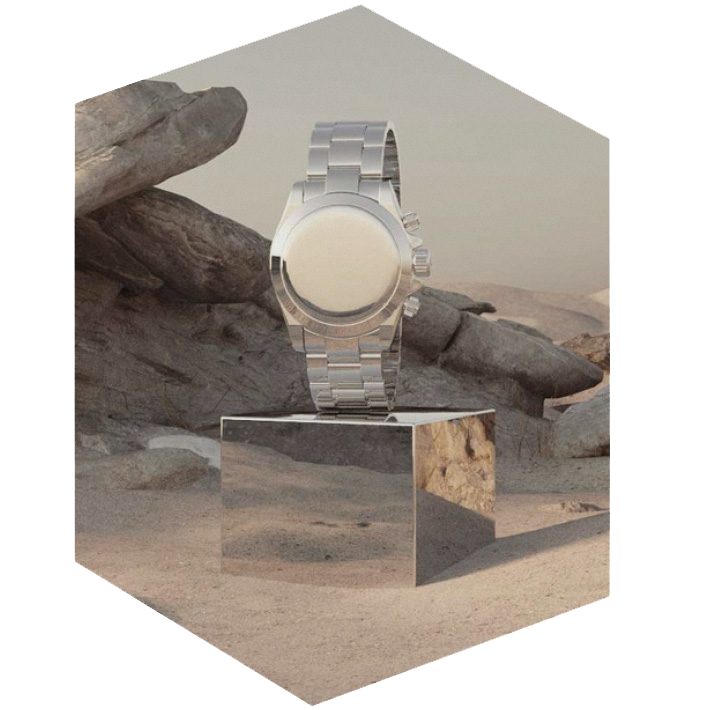INDUSTRY FACTS
of product presentation and brand presence at the point of sale.
This question accompanies us and our customers when it comes to sustainable product development at the POS. We are always striving to keep ourselves fit in this area and to expand our know-how.
An important meeting place to find out about sustainable materials that are coming onto the market or are already in use is the MaterialDistrict trade fair in Utrecht, Holland.
Our responsible design engineer, Armin Büeler, who deals with these questions, describes below his impressions of his visit to the MaterialDistrict which he attended in March this year.
INTERVIEW / ARMIN BÜELER, DISPLAYSOUTIONS AG / EMANUEL BRUNNER, DISPLAYSOLUTIONS AG
Armin, what was your impression of the fair.
The show is a good size to get a general overview of the materials on display in one day.
In addition to many start-ups, there were also some established companies that were represented at the fair. I also found it exciting that especially the Benelux countries are leading in the field of sustainable materials.
Is it easy for the trade show visitor to get the important information regarding the different materials? What about the material prices? Are they visible and available?
In general, the exhibitors were very eager to explain the different materials and their properties in a mutual personal exchange.
Also regarding how the materials can be further processed, the information from the manufacturer is usually clear.
Once it comes to pricing, you would have to dig deeper into product development and have the product quantities to be able to calculate the prices.
What is the trend in sustainable materials?
The trend is towards waste material from agriculture / industry or recycled materials.
Is it understandable for the trade fair visitor whether the materials are biogenic or recycled plastics?
For marketing reasons, many exhibitors provide clear information about the basis on which the respective material is built.
Are the materials presented solutions that have already been used and tested or are they all new materials?
Some materials are already on the market and are already widely used and applied, yet other materials are not yet ready for the market and are in the development phase.
What about certificates for the various materials? Materials? Can you see at the stands which materials are certified?
For the materials established in the market, the ingredients and material properties must be disclosed to obtain the certifications.
How should one proceed to find the right sustainable material for the desired product in a product development?
One should ask oneself whether the natural property of the material fits the product. Materials are usually consciously used visually in product development, so it is desirable to see if a sustainable material has been used.
On the other hand, a covered injection molded part, for example, must have properties that meet the technical requirements, and visual quality is not the primary consideration.
Have you discovered an injection molding material that you think would be particularly suitable for POS (heat and heat resistance in the shop window)?
A substitute material for conventional plastic would be, for example, a PLA which is produced on the basis of lactic acid and renewable raw materials.
Recycled ABS is also good to use at POS from the required properties.
There is a wide range of biogenic and recycled plastics. To fully understand the whole issue, one has to ask if and how the chosen material can be degraded or recycled, in other words, one should consider what will happen to the material once it is no longer needed. The recycling issue is a big challenge, especially with new, not yet established materials.
Thank you for your comments, we will stay tuned and keep ourselves informed so that we can suggest to our customers the most suitable materials for the product development in question!
21.04.2023
MATERIALDISTRICT - INSPIRATION AND CONVERSATIONS IN HOLLAND
Which are sustainable, useful materials that we can use at the POS? How do external influences such as light and temperature change new, biogenic and recycled materials? Which materials are interesting in terms of price for our area?
This question accompanies us and our customers when it comes to sustainable product development at the POS. We are always striving to keep ourselves fit in this area and to expand our know-how.
An important meeting place to find out about sustainable materials that are coming onto the market or are already in use is the MaterialDistrict trade fair in Utrecht, Holland.
Our responsible design engineer, Armin Büeler, who deals with these questions, describes below his impressions of his visit to the MaterialDistrict which he attended in March this year.
INTERVIEW / ARMIN BÜELER, DISPLAYSOUTIONS AG / EMANUEL BRUNNER, DISPLAYSOLUTIONS AG
Armin, what was your impression of the fair.
The show is a good size to get a general overview of the materials on display in one day.
In addition to many start-ups, there were also some established companies that were represented at the fair. I also found it exciting that especially the Benelux countries are leading in the field of sustainable materials.
Is it easy for the trade show visitor to get the important information regarding the different materials? What about the material prices? Are they visible and available?
In general, the exhibitors were very eager to explain the different materials and their properties in a mutual personal exchange.
Also regarding how the materials can be further processed, the information from the manufacturer is usually clear.
Once it comes to pricing, you would have to dig deeper into product development and have the product quantities to be able to calculate the prices.
What is the trend in sustainable materials?
The trend is towards waste material from agriculture / industry or recycled materials.
Is it understandable for the trade fair visitor whether the materials are biogenic or recycled plastics?
For marketing reasons, many exhibitors provide clear information about the basis on which the respective material is built.
Are the materials presented solutions that have already been used and tested or are they all new materials?
Some materials are already on the market and are already widely used and applied, yet other materials are not yet ready for the market and are in the development phase.
What about certificates for the various materials? Materials? Can you see at the stands which materials are certified?
For the materials established in the market, the ingredients and material properties must be disclosed to obtain the certifications.
How should one proceed to find the right sustainable material for the desired product in a product development?
One should ask oneself whether the natural property of the material fits the product. Materials are usually consciously used visually in product development, so it is desirable to see if a sustainable material has been used.
On the other hand, a covered injection molded part, for example, must have properties that meet the technical requirements, and visual quality is not the primary consideration.
Have you discovered an injection molding material that you think would be particularly suitable for POS (heat and heat resistance in the shop window)?
A substitute material for conventional plastic would be, for example, a PLA which is produced on the basis of lactic acid and renewable raw materials.
Recycled ABS is also good to use at POS from the required properties.
There is a wide range of biogenic and recycled plastics. To fully understand the whole issue, one has to ask if and how the chosen material can be degraded or recycled, in other words, one should consider what will happen to the material once it is no longer needed. The recycling issue is a big challenge, especially with new, not yet established materials.
Thank you for your comments, we will stay tuned and keep ourselves informed so that we can suggest to our customers the most suitable materials for the product development in question!
NEWSLETTER AND BE THE FIRST TO KNOW
ABOUT NEW ARTICLES


